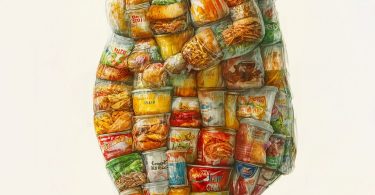BEST OF/
Glycation, a chemical reaction between sugars and proteins, has the particularity of being both endogenous – it works spontaneously within the body and exogenous – it is active when cooking food.
Endogenous glycation results from the consumption of sugars, simple carbohydrates (like refined sugar) or complex carbohydrates (like flour) that gradually attach to proteins in the body.
This reaction is very slow, several months to several years and partly limited due to the controlled temperature of the body. It is by nature difficult to reverse and particularly dangerous for slow-turnover proteins. It leads to the formation of AGEs (Advanced glycation Endproducts) which are a major cause of the aging of organs as well as of diseases linked to aging (diabetes, neurodegenerative diseases …).
Exogenous glycation occurs when food is cooked at high temperatures. It is fast and produces browned and aromatic compounds, AGEs, contained for example in the crust of bread or grilled meats, as well as “ultimate” glycation products such as acrylamides known to be carcinogenic.
These products are largely eliminated by the body. However, part of the AGEs are absorbed (estimated at 10% of the total ingested) and are added to the endogenous AGEs and thus participate in the aging of the body.
So, from the crust or the crumb of bread, what is the most dangerous source of glycation?
To date, opinions differ on the importance of the respective responsibility of the types of glycation:
The implications of endogenous glycation on aging are well known and documented.
The exogenous glycation products are less well studied (1). However, their dangerousness is not negligible. Thus, it is observed that a restriction in exogenous AGEs improves insulin resistance in diabetics (2).
While waiting for the results of new research, opinions converge to affirm that the 2 sources of the glycation reaction have a cumulative effect on aging.
© AGE BREAKER 01 2021
[AGE BREAKER, patented nutritional supplements, based on rosmarinic acid, recognized by aging specialists around the world for their properties to reverse the effects of glycation.] [Glycation is one of the major causes of aging. Resulting from the fixation of sugars on the proteins constituting the organism, glycation generates toxic compounds that cause cellular aging. Glycation is particularly involved in metabolic disorders, skin aging and cognitive decline.]
More on www.agebreaker.com
#agebreaker #glycation
(1): K. Nowotny et Al. Dietary advanced glycation end products and their relevance for human. Ageing Research Reviews, 47(2018) 55-66. doi: 10.1016/j.arr.2018.06.005
(2): J. Uribarri et Al. Restriction of advanced glycation end products improves insulin resistance in human type 2 diabetes: potential role of AGER1 and SIRT1. Diabetes care, Published online 2011 Jun 17. doi: 10.2337/dc11-0091









